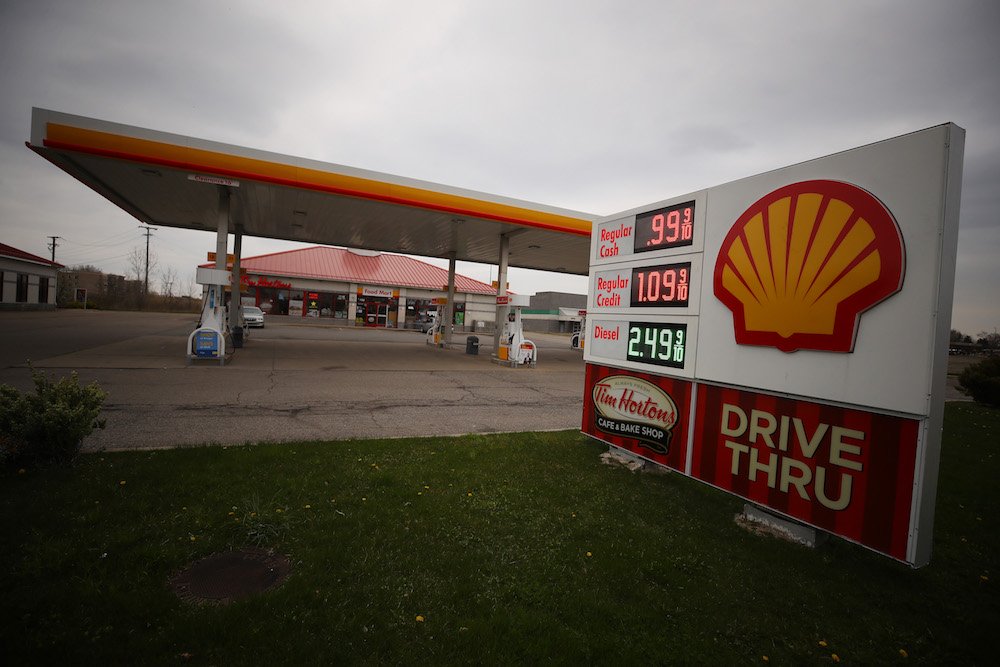
- ARAB NEWS
- 04 Jul 2025

Oil prices ended their sixth week of gains amid several bullish developments that lent support to the OPEC+ meeting that was held on Saturday. The equities markets were considerably higher, as investors factored in the reduced lockdowns in most countries and the expectations this brought of a higher demand for oil.
Brent crude price moved higher by the week, closing at $42.30 per barrel as a correction after closing at parity to West Texas Intermediate (WTI) a week earlier.
WTI closed the week higher at $39.55 per barrel, close to the $40 barrier, which is a level that might slightly recuperate the US shale industry, though rig counts keep dropping rapidly. However, the latest Short-Term Energy Outlook of the US Energy Information Administration (EIA) forecasts Brent crude to average $34 per barrel in 2020.
In 45 days, from April 20 to June 5, WTI prices moved from nearly –$40 to +$40 per barrel. This upward movement in oil prices came despite the civil unrest across the US that complicates the economic recovery from the coronavirus disease (COVID-19) pandemic and risks a second wave of infections.
Also, the huge rebound in oil prices came despite US diesel demand falling to a 21-year low and gasoline stockpiles swelling, according to the EIA, which suggested that the consumption of petroleum refined products is not recovering as quickly as anticipated.
This week many bullish developments took place in oil markets, including an unexpectedly large drop in the US unemployment rate that fell to 13.3 percent in May. The US unemployment rate was expected to jump to 20 percent but the return of 2.5 million jobs brought optimism about economic recovery.
The most bullish development is that OPEC+ will continue its historical output cuts agreement beyond June 2020.
Faisal Faeq
The start of the storm season in the US Gulf of Mexico threatens crude oil supplies of the most wanted medium sour crude grades in the market. Tropical Storm Cristobal has led to a shutdown of about 30 percent of the Gulf of Mexico’s crude oil production and more than 20 percent of natural gas supplies as Cristobal strengthened back into a tropical storm moving toward Louisiana.
Accordingly, about 10 percent of the US Gulf oil platforms have been evacuated, so that Gulf crude production is estimated to have fallen to 1.6 million barrels per day (bpd) in June. This is in addition to the threats to refining operations. Dealing with the storm during the pandemic is certainly different than before, as more precautions are needed.
The steady recovery in Chinese refining capacities in recent weeks meant that China’s crude oil imports rebounded to a near record high as oil demand reached 90 percent of the pre-COVID-19 levels in April. Its crude oil imports jumped by 13 percent from April to 11.11 million bpd in May.
The most bullish development is that OPEC+ will continue its historical output cuts agreement beyond June 2020. This development did not factor in oil prices as the extension deal was agreed during the weekend.
The consensus that was reached has effectively killed the uncertainty over demand outlook.
By extending output cuts for another month, OPEC+ efforts reaffirm the development of market fundamentals rather than focusing on oil price movements that have rebounded. OPEC+ is effectively considering a reduction in the huge oil glut in the market that has accumulated amid the lower oil demand resulted in the wake of the pandemic.
OPEC+ producers will closely monitor the market and oil stock levels in the upcoming months to decide the upcoming output strategies, even if ministers will have to meet on monthly basis remotely.